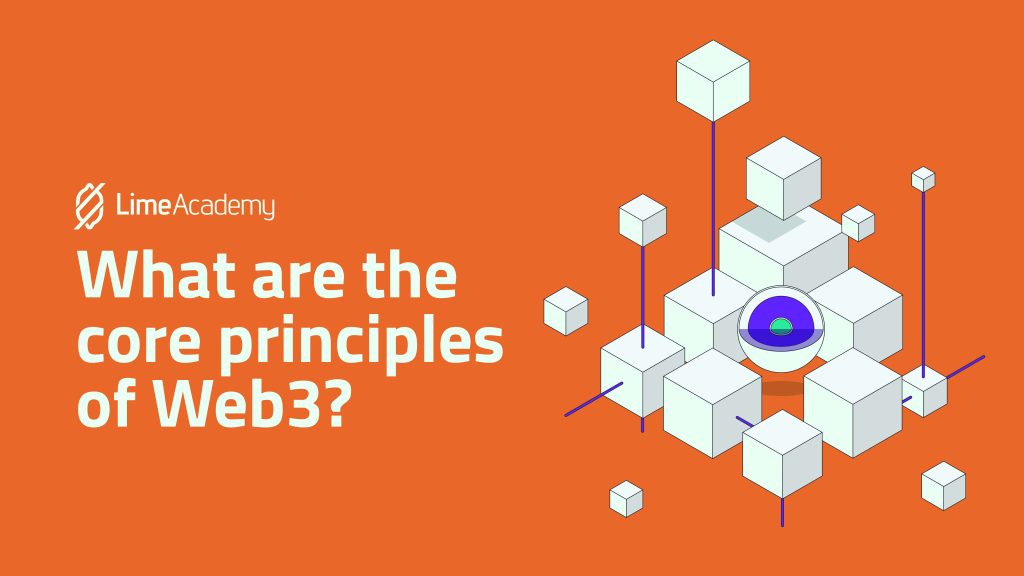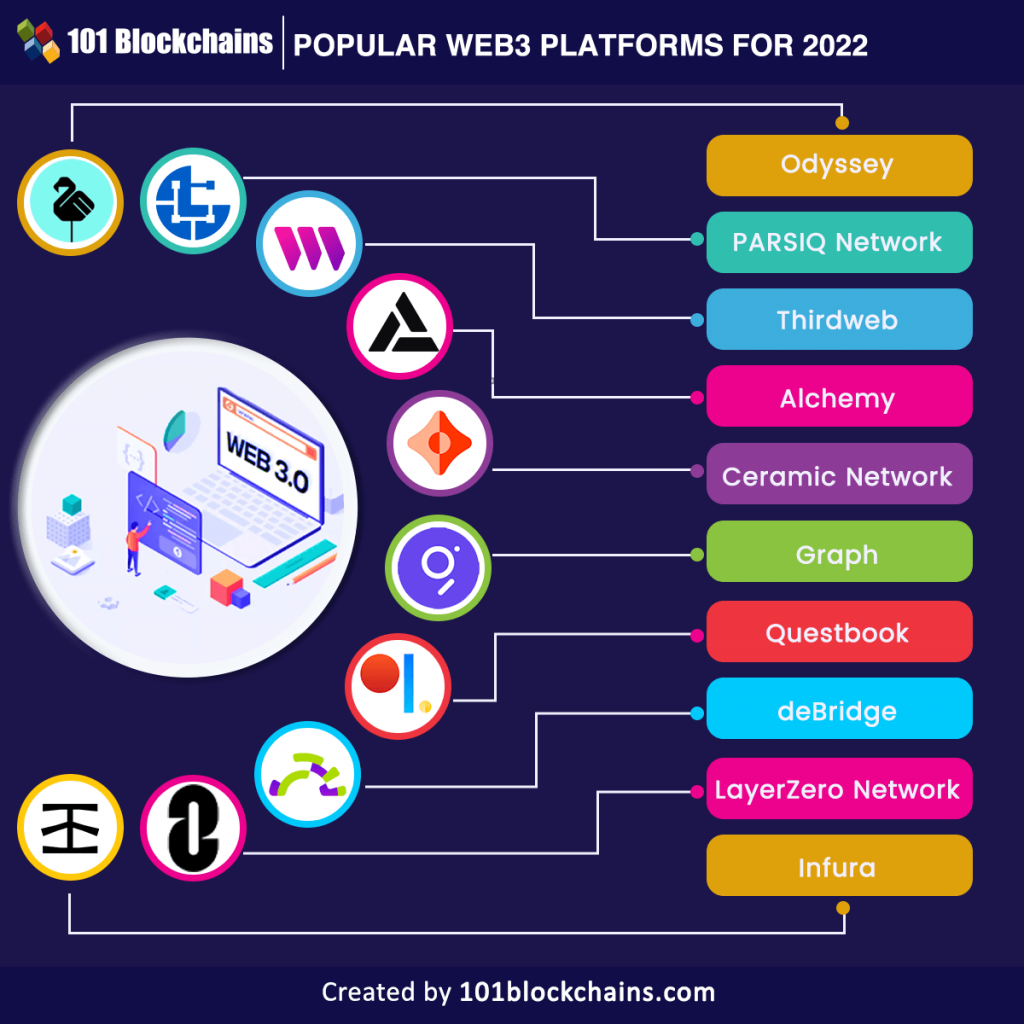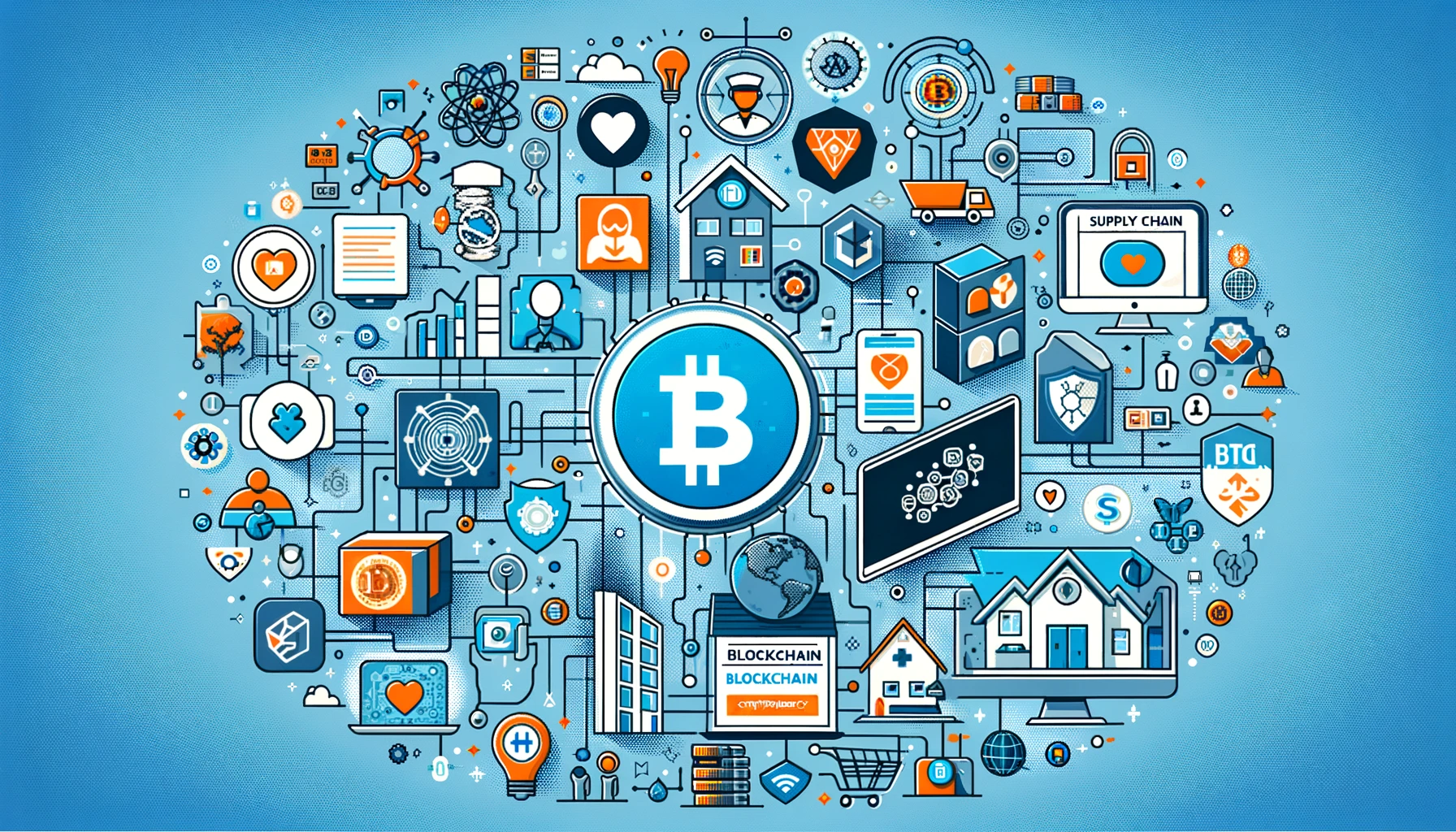
What is Decentralization? The Core Principle Unlocking the Future of Web3
In an increasingly digital world, terms like "blockchain," "cryptocurrency," and "Web3" are everywhere. But at the heart of this technological revolution lies a fundamental concept that often goes misunderstood: decentralization. Far from just a buzzword, decentralization is the foundational principle that promises to reshape our internet, our economies, and even our societies.
This comprehensive guide will demystify decentralization, explain why it’s crucial for the future of the internet (Web3), and explore its profound implications for users worldwide.
Table of Contents:
- Introduction: The Internet We Know vs. The Internet We Could Have
- What Exactly is Decentralization?
- A Simple Analogy
- Key Characteristics of Decentralized Systems
- Centralization vs. Decentralization: Why Does it Matter?
- The Risks of Centralization
- The Benefits of Decentralization
- How Does Decentralization Work in Practice? (The Role of Blockchain)
- Distributed Ledgers
- Nodes and Consensus
- Decentralization: The Core Principle of Web3
- User Ownership and Control
- Key Web3 Applications Powered by Decentralization
- Decentralized Applications (DApps)
- Decentralized Finance (DeFi)
- Non-Fungible Tokens (NFTs)
- Decentralized Autonomous Organizations (DAOs)
- Decentralized Storage
- The Transformative Power of a Decentralized Web3
- Challenges and the Road Ahead
- Conclusion: Embracing a Decentralized Future
1. Introduction: The Internet We Know vs. The Internet We Could Have
Think about your daily online life. You probably use Google for search, Facebook or Instagram for social media, Amazon for shopping, and a bank for your finances. These services are incredibly convenient, but they all have one thing in common: they are centralized. This means a single company or entity controls the data, the platform, and the rules.
While this centralized model has brought us the internet as we know it (often called "Web2"), it also comes with significant drawbacks:
- Data breaches: Your personal information is stored in one place, making it a prime target for hackers.
- Censorship: A central authority can decide what content is allowed or removed.
- Single points of failure: If a central server goes down, the entire service becomes unavailable.
- Lack of user control: Companies own your data and can change their terms of service at any time.
Enter decentralization – the foundational concept behind Web3, the next evolution of the internet. Instead of relying on powerful intermediaries, Web3 aims to put control back into the hands of its users, creating a more open, transparent, and equitable digital world.
2. What Exactly is Decentralization?
At its simplest, decentralization means distributing power and control away from a central point. Instead of one entity making all the decisions or holding all the information, these responsibilities are shared across a network of participants.
A Simple Analogy
Imagine you have a single, massive library (the centralized model). All the books are in one building, managed by one librarian. If that library burns down, all the books are lost. If the librarian decides you can’t read certain books, you have no choice.
Now, imagine if every person in the city had a copy of every book, and whenever a new book was written, everyone automatically got a copy (the decentralized model).
- If one person’s house burns down, the books are safe elsewhere.
- No single person can stop others from reading a book.
- Everyone collectively agrees on which books exist and are valid.
This is the essence of decentralization: a system that functions without relying on a single authority or a single point of failure.
Key Characteristics of Decentralized Systems
- No Single Point of Control: No one person, company, or government owns or controls the entire network.
- Distributed Network: Information and operations are spread across many different computers or "nodes" worldwide.
- Peer-to-Peer Interaction: Participants interact directly with each other, rather than through an intermediary.
- Censorship Resistance: Because there’s no central authority to shut down or block content, it’s much harder to censor information or transactions.
- Transparency (often): In many decentralized systems (like blockchains), all transactions and data are publicly viewable and verifiable by anyone on the network.
- Trustless (often): Participants don’t need to trust a central authority; instead, they trust the rules of the system (e.g., cryptographic proofs and consensus mechanisms).
3. Centralization vs. Decentralization: Why Does it Matter?
Understanding the differences between these two models is crucial to grasping the potential of Web3.
The Risks of Centralization
When power is concentrated in the hands of a few, it creates inherent vulnerabilities:
- Security Risks: A single database or server is a "honey pot" for hackers. One successful breach can expose millions of users’ data (e.g., Equifax, Yahoo).
- Censorship and Control: Central authorities can decide what content is allowed, who can use a service, or even freeze funds. This can lead to suppression of dissent or exclusion of users.
- Single Points of Failure: If the central server or system goes offline, the entire service stops working, impacting all users.
- Lack of Transparency: Users often have no visibility into how their data is used or how decisions are made by the central entity.
- Monopolies and Gatekeepers: Centralized companies can become dominant, stifling innovation and charging high fees as they control access to services.
The Benefits of Decentralization
Decentralization directly addresses the risks posed by centralized systems, offering a more robust and equitable alternative:
| Feature | Centralized System (Web2) | Decentralized System (Web3) |
|---|---|---|
| Control | Single entity (company, government) | Distributed among network participants |
| Data Ownership | Company owns user data | Users own their own data |
| Security | Vulnerable to single point of attack/failure | Highly secure, resilient to attacks (no single point) |
| Censorship | Prone to censorship and content removal | Resistant to censorship |
| Transparency | Opaque; internal decisions/data usage not visible | Often transparent; all transactions/rules visible |
| Trust | Requires trust in an intermediary | Trust is in the code/network rules (trustless) |
| Resilience | Vulnerable to downtime (single point of failure) | Highly resilient; if some nodes fail, others continue |
| Innovation | Controlled by central entity; permission often needed | Open; anyone can build on existing protocols |
By eliminating the need for a trusted intermediary, decentralized systems foster a new level of security, transparency, and user empowerment.
4. How Does Decentralization Work in Practice? (The Role of Blockchain)
While decentralization is a broad concept, its most prominent and impactful application in the digital world is through blockchain technology. Blockchain is essentially a specific type of distributed ledger technology (DLT).
Distributed Ledgers
Imagine a shared, constantly updated spreadsheet that everyone on a network has a copy of. This spreadsheet records all transactions or data entries. That’s a simplified view of a distributed ledger.
- No Central Database: Instead of one company’s server holding all the information, every participant ("node") in the network holds a copy of the entire ledger.
- Shared and Synchronized: Whenever a new transaction occurs, it’s added to the ledger and then synchronized across all copies in the network.
Nodes and Consensus
For a distributed ledger to work reliably without a central authority, there needs to be a way for all participants to agree on the correct state of the ledger. This is where nodes and consensus mechanisms come in:
- Nodes: These are the individual computers or servers that run the blockchain software, store a copy of the ledger, and participate in verifying and adding new transactions. Anyone can typically run a node.
- Consensus Mechanisms: These are the rules and algorithms that nodes follow to agree on the validity of transactions and the order in which they are added to the blockchain. Examples include:
- Proof of Work (PoW): Used by Bitcoin, where nodes "mine" by solving complex puzzles to propose new blocks of transactions.
- Proof of Stake (PoS): Used by Ethereum 2.0, where nodes "stake" (lock up) cryptocurrency to be chosen to validate transactions.
Because a majority of nodes must agree for a transaction to be added, it becomes incredibly difficult for any single party to alter the ledger or commit fraud. This distributed verification process is what makes decentralized systems so secure and tamper-proof.
5. Decentralization: The Core Principle of Web3
Web3 is not just about new technologies; it’s about a fundamental shift in how the internet operates. At its heart, Web3 aims to build a more user-centric, decentralized, and open internet where individuals have greater control over their data, identity, and digital assets.
Decentralization is the engine that powers this vision, enabling a range of innovative applications and concepts:
User Ownership and Control
In Web2, companies own your data. In Web3, decentralization allows for:
- Self-Sovereign Identity: You control your digital identity, deciding who sees what information, rather than relying on a Facebook or Google login.
- Data Monetization: You could potentially earn from your data rather than companies profiting from it exclusively.
- Digital Asset Ownership: True ownership of digital goods (like NFTs) is possible because they are recorded on a decentralized, immutable ledger.
Key Web3 Applications Powered by Decentralization
-
Decentralized Applications (DApps):
- What they are: Applications that run on a decentralized network (like a blockchain) rather than a single server. They use smart contracts (self-executing code) to automate agreements.
- How decentralization helps: No single entity can shut them down, censor their content, or control user access. They are always available as long as the underlying network is running.
- Examples: Decentralized exchanges (DEXs) like Uniswap, social media platforms like Lens Protocol, Web3 gaming.
-
Decentralized Finance (DeFi):
- What it is: A financial system built on decentralized blockchains that offers traditional financial services (lending, borrowing, trading, insurance) without intermediaries like banks.
- How decentralization helps: Removes the need for trust in banks, allowing for peer-to-peer transactions, lower fees, greater transparency, and accessibility for anyone with an internet connection.
- Examples: Aave (lending), Compound (borrowing), MakerDAO (stablecoins).
-
Non-Fungible Tokens (NFTs):
- What they are: Unique digital assets (images, music, videos, even tweets) whose ownership is verified and recorded on a blockchain. Each NFT is distinct and cannot be replicated.
- How decentralization helps: The blockchain ensures immutable proof of ownership and authenticity, making digital items truly scarce and verifiable, unlike simply downloading an image.
- Examples: Digital art, collectibles, virtual land in metaverses.
-
Decentralized Autonomous Organizations (DAOs):
- What they are: Organizations governed by code and community consensus, rather than a traditional hierarchical structure. Decisions are made through proposals and voting by members who hold governance tokens.
- How decentralization helps: Fosters transparent, democratic, and community-driven governance, where power is distributed among stakeholders.
- Examples: Investment DAOs, social DAOs, protocol DAOs (governing blockchain projects).
-
Decentralized Storage:
- What it is: Storing data across a distributed network of computers, rather than on a single centralized server (like Google Drive or AWS).
- How decentralization helps: Increases data security (no single point of failure), privacy, and censorship resistance. Data is broken into pieces and encrypted, then stored on multiple nodes.
- Examples: IPFS (InterPlanetary File System), Filecoin, Arweave.
6. The Transformative Power of a Decentralized Web3
The shift to a decentralized Web3 promises a range of profound benefits:
- True Digital Ownership: You genuinely own your digital assets, data, and identity, rather than renting them from platforms.
- Enhanced Security and Privacy: Reduced risk of data breaches and greater control over your personal information.
- Censorship Resistance: Information and applications are harder to shut down or control by powerful entities.
- Greater Transparency: Rules and transactions are often publicly verifiable on the blockchain, fostering trust and accountability.
- Open and Permissionless Innovation: Anyone can build on open decentralized protocols without needing permission from a central gatekeeper.
- Economic Inclusion: Financial services become accessible to anyone with an internet connection, breaking down traditional barriers.
- Community Governance: Users can actively participate in shaping the platforms and protocols they use, moving away from corporate hierarchies.
7. Challenges and the Road Ahead
While the promise of decentralization is immense, it’s important to acknowledge the challenges:
- Scalability: Decentralized networks can sometimes be slower and more expensive than centralized ones due to the overhead of distributed consensus. (Though solutions like Layer 2 scaling are emerging).
- User Experience (UX): Interacting with decentralized applications can be more complex for beginners.
- Regulation: Governments are still grappling with how to regulate decentralized technologies, which can create uncertainty.
- Energy Consumption: Some consensus mechanisms (like Proof of Work) consume significant energy, though more efficient alternatives (like Proof of Stake) are gaining traction.
- Governance Complexity: While DAOs offer democratic governance, reaching consensus in large, distributed communities can be challenging.
Despite these hurdles, the rapid pace of innovation in the Web3 space suggests that many of these challenges will be addressed as the technology matures and adoption grows.
8. Conclusion: Embracing a Decentralized Future
Decentralization is more than just a technical feature; it’s a philosophical shift that underpins the entire Web3 movement. It’s about empowering individuals, fostering transparency, and building a more resilient, fair, and open internet for everyone.
By understanding what decentralization is and why it matters, you’re not just grasping a technical concept – you’re gaining insight into the core principle that is driving the next evolution of the digital world. The journey to a fully decentralized future is ongoing, but its potential to transform our digital lives for the better is undeniable. Get ready to participate in an internet where you are in control.



Post Comment